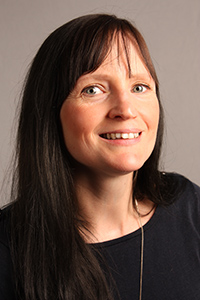This case study gives an overview of how the environmental impacts of textiles and links to the concept of Circular Economy are integrated into a first year module on Textiles…
What was the programme or module?
Textile Contexts, a 1st year module within the BA Textile Design. The module focuses on design manufacturing and sustainability. It covers dyeing, spinning, fabric construction, fabric structures (print, weave, knit, non-wovens), manufacturing processes, and their impact in relation to the UN SDGs, particularly with regards to social contexts, responsible consumption and production, climate change and water governance.
What happened?
Overview: Labs on dyeing, spinning, fibre and fabric construction, and fibre identification. Exploring the sustainable impacts of cellulose, protein, and synthetic fibre and fabric production. Alternative models of production and textiles in relation to the linear and circular economies.
Context: Textiles is the world’s second most polluting industry, and with the context of increasing awareness of the unsustainable nature of the industry, and its need to change its traditional model of design > manufacture > consumption > disposal is essential, and something that employers need graduates to understand.
Description: In practice, the students undergo lectures and practical labs which teaches them about fibres, processes, fabric structures and properties. Tied in with this is a weekly seminar on industrial manufacturing or textile design practices, and the sustainable impacts, particularly on consumer behaviour, recycling, upcycling, and responsible sourcing.
Evaluation: This is a new module which has re-situated existing context (the practical sessions) alongside sustainability, so there is no current data
Next steps: This module will continue to be developed in light of industry change and student feedback. Developing into second and third year content would be ideal, and a longer term project.
Which SDGs link to this subject?
We could address any of them, in relation to textiles, as it is such a huge, embedded industry. However, we focus on the more practical ways forward (as they are only in their first year) and these are UN SDGs 5, 8, 9, 10, 12-15.
In textiles there will always be a trade off between different elements of sustainable practice, and the students need to start to evaluate the develop their own ethical approaches to addressing these ideals and goals.
Why are the SDGs important to this subject?
On an employability level, an analogy can be made to 25 years ago when the industry switched to digital – employers were aware the change was coming, but hadn’t been trained in it, and needed graduates with these skills. Sustainability is the new ‘digital’ in this respect.
What went well?
Breaking down sustainable practice into a series of small choices which can add up to a bigger impact helps, so the students don’t feel overwhelmed or helpless. I will show them frankly depressing imagery and statistics about the current state of the industry, then show how manufacturers and technologists, and also small scale individual approaches can bring about solutions and change.
Contact:
Module Leader, Claire Lerpiniere (clerpiniere@dmu.ac.uk) 0116 257 7587
This post is one of a series of case studies describing teaching and learning activities linked to the SDGs at DMU.


Leave a Reply